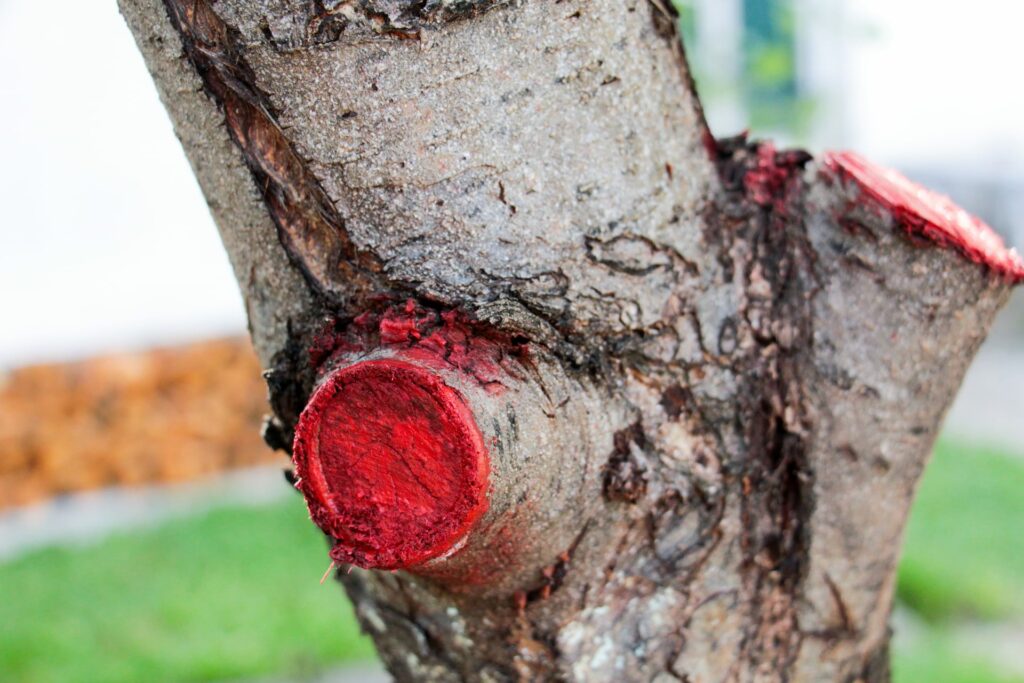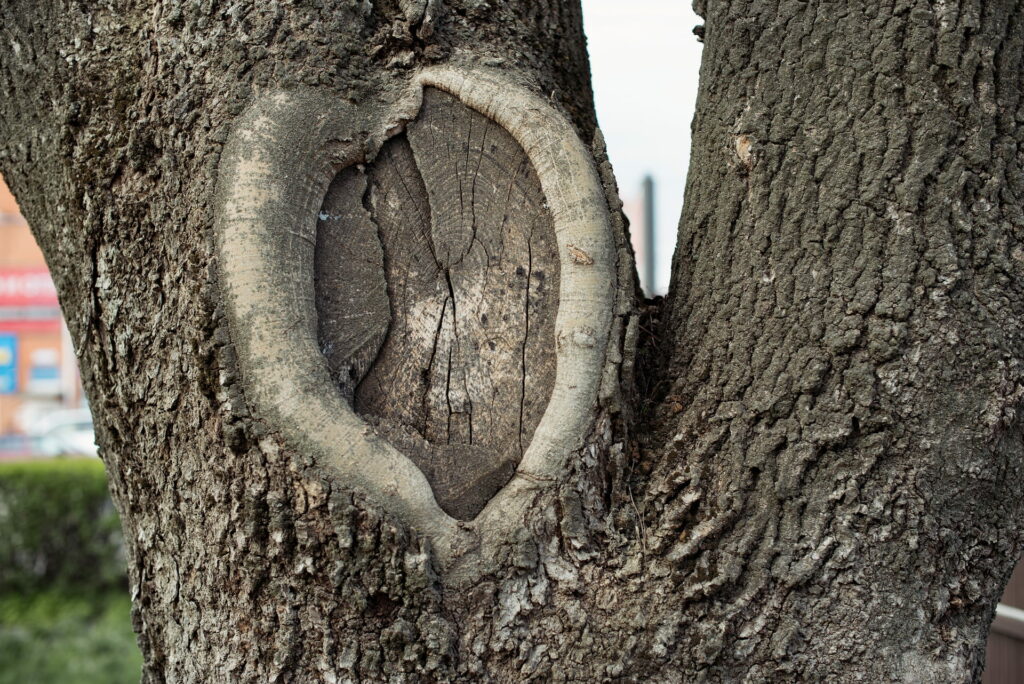Help Your Trees Heal & Remain Healthy
Trees are truly remarkable organisms that provide numerous benefits to our environment and our daily lives. They help clean the air we breathe, reduce noise pollution, and offer aesthetic appeal to our surroundings. However, trees are not immune to injuries, and understanding the science behind tree wound repair is crucial for maintaining their health and longevity.

Tree wounds can occur for various reasons, such as natural events, human activities, or animal interactions. In this blog post, we will delve into the fascinating process of tree wound repair, exploring how trees naturally heal from injuries, factors that influence the healing process, and best practices for assisting trees in their recovery.
We will also discuss how to prevent complications and when to seek professional help from a certified arborist. By understanding the science behind tree wound repair, we can promote the health and well-being of our beloved trees, ensuring they continue to thrive and contribute to the beauty and vitality of our environment.
Tree Wounds: Causes and Types
Trees can suffer injuries from various sources, and it’s essential to be aware of the common causes of tree wounds. By understanding how these injuries occur, we can take preventative measures and provide appropriate care when needed.
Common Causes of Tree Wounds
- Natural events: Storms, high winds, and lightning can cause branches to break or trees to topple, resulting in significant damage to the tree’s structure. Winter weather can also cause frost cracks in tree bark.
- Human activities: Pruning, lawn care, construction projects, and vehicular accidents can all lead to tree wounds. Improper pruning techniques or carelessly cutting tree roots during excavation can create lasting damage.
- Animal interactions: Animals like deer, rodents, and insects can cause tree wounds through browsing, gnawing, or tunneling beneath the bark.
Different Types of Tree Wounds
- Bark damage: Bark injuries can result from a variety of causes, including mechanical damage, sunscald, and frost cracks. These wounds can expose the tree’s sensitive cambium layer, making it vulnerable to pests and diseases.
- Branch and twig injuries: Broken or damaged branches and twigs can result from storms, improper pruning, or excessive weight from ice and snow. These injuries can leave the tree susceptible to decay and infection if not addressed properly.
- Root damage: Damaged or severed roots can be caused by construction projects, lawn care equipment, or even natural soil erosion. Root injuries can weaken the tree’s stability and reduce its ability to absorb water and nutrients.
Being aware of the causes and types of tree wounds is the first step in addressing these issues and ensuring the continued health and stability of our trees. In the following sections, we will explore the natural healing process of trees and how we can aid in their recovery.

The Natural Tree Wound Healing Process
Trees possess remarkable abilities to heal themselves after sustaining injuries. By understanding the natural processes behind tree wound repair, we can better assist our trees in recovering and maintaining their health.
How Trees Naturally Respond to Wounds
When a tree is wounded, it undergoes a process called compartmentalization, which helps prevent the spread of decay and disease. The tree forms physical and chemical barriers around the wound, effectively sealing off the damaged area and protecting the healthy tissue.
As part of the tree’s healing process, it produces callus tissue that grows around the wound’s edges. Over time, the callus tissue covers the damaged area, and the wound gradually closes. In some cases, the callus may eventually grow over the entire wound, restoring the tree’s protective bark layer.
Factors That Influence the Healing Process
- Tree species: Different tree species exhibit varying healing capabilities. Some species are more resistant to decay and have faster callus tissue growth rates, while others are more susceptible to infections and require longer recovery times.
- Age and overall health of the tree: Younger, healthier trees tend to recover from wounds more quickly than older or stressed trees. Trees in poor health may have a reduced capacity to compartmentalize and produce callus tissue, increasing their vulnerability to pests and diseases.
- Location and severity of the wound: Wounds on the trunk or main branches may take longer to heal than those on smaller branches or twigs. Larger or deeper wounds also require more time to recover, as the tree needs to produce more callus tissue to cover the damaged area.
By understanding the natural tree wound healing process and the factors that influence it, we can make informed decisions on how to care for our trees and promote their successful recovery. In the next section, we will discuss best practices for assisting trees in wound recovery and maintaining overall tree health.
Best Practices for Assisting Trees in Wound Recovery
Proper tree care can significantly impact the recovery process and ensure the tree remains healthy and strong. By following these best practices, we can support our trees in their wound healing and overall well-being.
Properly Cleaning and Treating Tree Wounds

- Removing damaged bark and wood: Carefully remove any loose or damaged bark around the wound to expose healthy tissue. Use a clean, sharp tool, such as a knife or chisel, to make smooth cuts and avoid causing further injury to the tree.
- Disinfecting tools and the wound site: Clean all tools before and after use to prevent the spread of diseases or pests. While it’s generally not necessary to disinfect the wound itself, in cases of suspected disease or pest infestation, consult a certified arborist for guidance on appropriate wound care.
- Avoiding the use of wound dressings and sealants: Contrary to popular belief, applying wound dressings or sealants can do more harm than good. These products can trap moisture and create an ideal environment for decay and infection. It’s best to let the tree’s natural healing process take its course.
Promoting Overall Tree Health
- Providing adequate water and nutrients: Ensure your tree receives proper water and nutrients, especially during periods of drought or stress. A healthy tree is better equipped to heal wounds and fight off infections.
- Pruning and removing dead or damaged branches: Regular pruning helps maintain a tree’s structure and encourages healthy growth. Remove dead, damaged, or diseased branches promptly to prevent the spread of decay and disease within the tree.
- Monitoring for signs of pests and diseases: Keep an eye out for signs of pest infestations or diseases, such as discolored leaves, abnormal growths, or excessive sap production. Early detection and intervention can prevent these issues from worsening and causing further harm to the tree.
By following these best practices, we can assist our trees in their wound recovery and help maintain their overall health and well-being. In the next section, we will discuss how to prevent complications from tree wounds and when to consult a professional arborist for assistance.
Preventing Tree Wound Complications
Proactively addressing potential issues associated with tree wounds can prevent complications that may lead to more severe damage or even the loss of the tree. Here, we will discuss how to identify and address these problems, and when to seek professional help.
Identifying and Addressing Potential Issues
- Decay and rot: Wounds that fail to heal properly or are left untreated can lead to decay and rot, weakening the tree’s structure. Regularly inspect your tree for signs of decay, such as soft or discolored wood, and consult an arborist if you suspect a problem.
- Insect infestations: Some insects are attracted to tree wounds and can cause further damage or spread diseases. Monitor the wound for signs of insect activity, such as small holes or sawdust-like frass, and apply appropriate insect control measures if necessary.
- Fungal infections: Fungi can enter a tree through its wounds, causing diseases that can damage or kill the tree. Keep an eye out for fungal growths, discolored leaves, or wilting, and seek professional advice for treatment options if needed.

When to Consult a Professional Arborist
If you notice any signs of decay, insect infestations, or fungal infections, it’s essential to consult a certified arborist who can accurately diagnose the issue and recommend the appropriate treatment. A professional arborist can provide valuable advice on wound care, as well as recommend advanced techniques for wound repair, such as cabling, bracing, or grafting, when necessary.
By being proactive in preventing tree wound complications and seeking professional help when needed, we can ensure the continued health and longevity of our trees. In the concluding section, we will summarize the key points discussed in this blog post and reiterate the importance of understanding tree wound repair.
The Science of Tree Wound Repair
Understanding the science behind tree wound repair is crucial in maintaining the health and well-being of our trees. By recognizing the causes and types of tree wounds, learning about the natural healing process, and implementing best practices for assisting trees in their recovery, we can play an active role in preserving their vitality.
Additionally, proactively preventing complications and seeking the guidance of professional arborists when necessary ensures that our trees continue to thrive and contribute to the beauty and environmental health of our surroundings. As stewards of these remarkable organisms, it’s our responsibility to understand and support their natural healing processes so they can remain a valuable and cherished part of our environment for generations to come.

